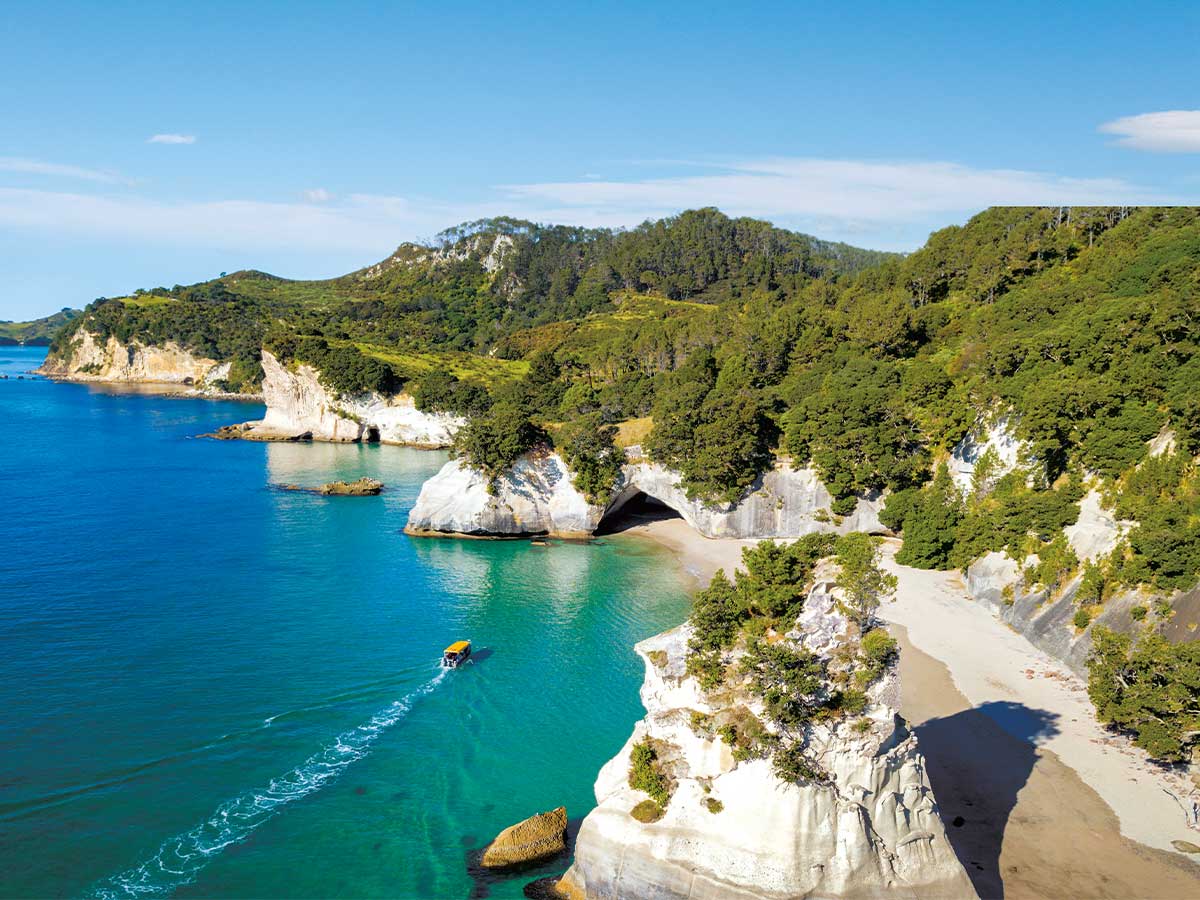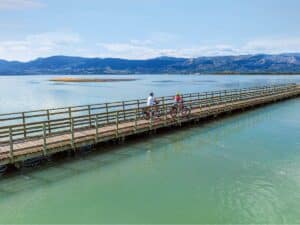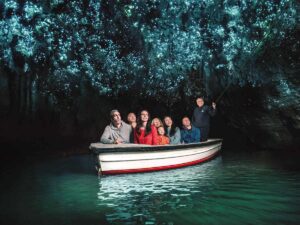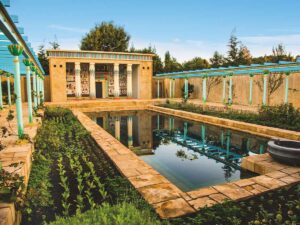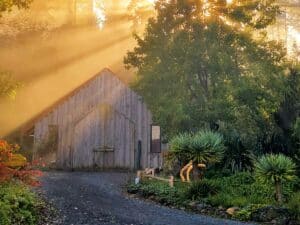Whitianga is a popular destination for holiday season travellers. The economic hub of Mercury Bay is surrounded by beautiful seascapes framed by rugged volcanic headlands. Paul Owen checks the pulse of the town after extensive flood damage and finds that it continues to be one of New Zealand’s finest destinations.
Visiting Whitianga eight months after a series of heavy storms washed its main access road away, I half expected to find a town on its knees, full of real estate signs advertising $1 reserve auctions.
Instead, the town was just how I remembered it from the previous visit a year earlier. The outdoor tables of harbourside cafés were chocked with customers, the car parks were bulging, and there were only a couple of ordinary ‘For Sale’ signs on SH25 as it led me along the spectacular foreshore of Mercury Bay to the town, past some of the most desirable real estate on the Coromandel Peninsula.
It was a triple whammy that took out SH25A – the feeder road most travelled by Aucklanders visiting Whitianga – earlier this year. Worrying cracks were first noticed in the surface of SH25A in the aftermath of Cyclone Hale, which crossed over the Peninsula in mid-January. Then came the same storm that caused 1.8 billion dollars of damage to our largest city on the weekend of its anniversary. With the ongoing appearance of large cracks caused by Cyclone Hale over previous weeks, Waka Kotahi closed the road as a precaution on 27 January, the Friday leading into the Auckland Anniversary weekend. Just a few hours later, a large section of the route collapsed near the summit at Taparahi and slid hundreds of metres into the watershed below.
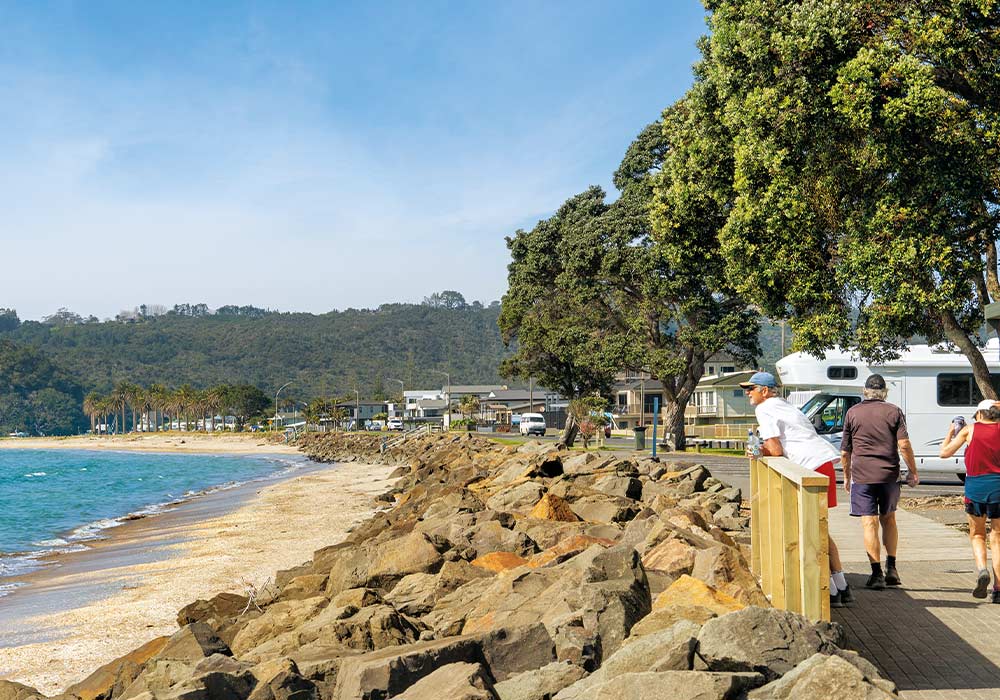
The coup de grâce for SH25A was the arrival of Cyclone Gabrielle in February, which water-blasted even more material from the original slip-site near the summit, widening the gap between the surviving road sections and forcing Waka Kotahi to contemplate one of the most challenging road repairs ever. Months later, the route remains closed but is set to open in time for Christmas, three months ahead of schedule*.
With two cyclones and a storm that probably should have been classified as one taking out one of the main accessways to it in January, there were dire predictions about the economic effects on Whitianga. But you can’t keep a good town down for long. Especially if it’s located fortuitously on a waterfront that rivals that of Papeete (Tahiti) and possesses many natural attractions, an interesting past, and combines the potential for recreation with the back-up of well-developed hospitality infrastructure. Whitianga hits all these marks.
A coast formed by fire
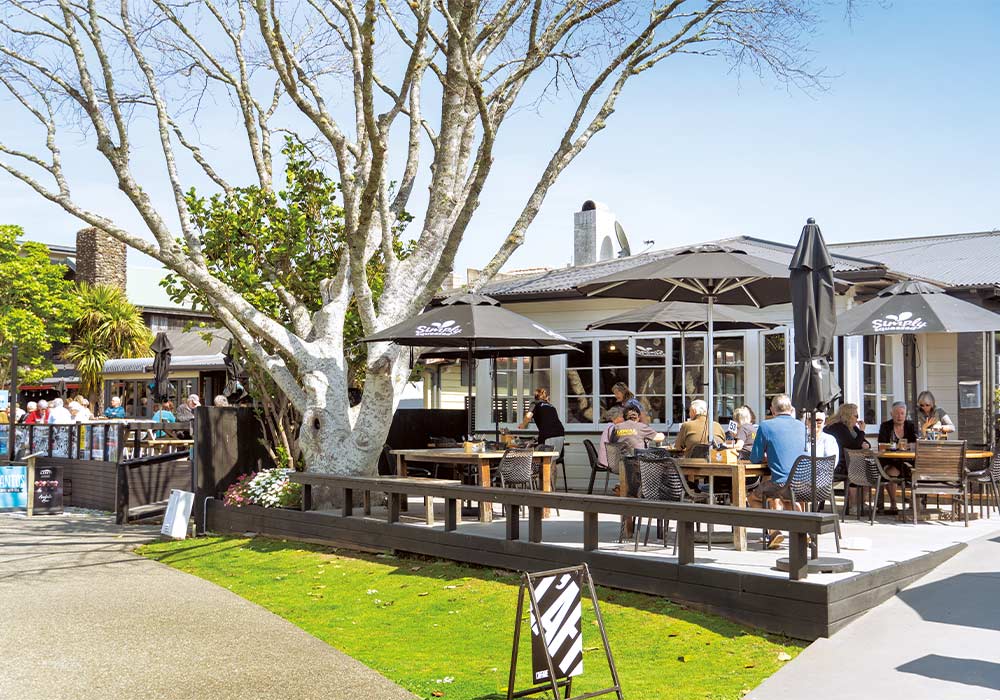
It’s the coastline of the Mercury Bay region that is the area’s main attraction, whether you’re a surfer looking for a break, a fisher seeking a snappy bite, or can simply recognise an interesting landform when you see one and have a clue to how it was formed.
Mercury Bay is a dreamland for anyone with an appreciation of vulcanology for a lot of it was formed by lava spewing violently out of ancient volcanos 20 million years ago. These were then eroded into deep river valleys, uplifted to great heights with Faultline pressure, and then flooded when the sea returned to its present level after the last Ice Age ended.
The result is a topography that’s up and down and topsy-turvey enough to give a road engineer a migraine. It looks dramatic, all turquoise sea energy cutting and moulding the cliffs, archways and caves into fantastic shapes and forms, but there’s an element of truth when geology fans say: you should have seen it millions of years ago.
The topography is no less spectacular under the water, with large sea mounts and deep rifts creating plenty of fishing hotspots. The safe anchorage of Whitianga Harbour and its proximity to deep ocean water made it a game fisher’s paradise, and it quickly achieved world fame for the record-setting catches of Striped and Black Marlin landed there by celebrity fishers like the American author, Zane Grey.
It’s a coast best viewed by boat, especially as that’s the only way to get to the spectacular Cathedral Cove these days after the recent storms swept the walkway away. The Cove, the scenic jewel in the crown of Mercury Bay, can be accessed in three ways. Two involve driving the 35km from Whitianga to Hahei and either launching your own kayak or paddleboard to reach the cove or hiring Hahei’s water taxi service to take you there and pick you up again later.
Perhaps the best way of all is to take the two-hour Glass Bottom Boat tour that leaves Whitianga Harbour and takes in most of the southern coastline of Mercury Bay. This gives close-up views of the cove and the cave-pocked islands further off-shore. The Te Whanganui-A-Hei marine reserve was established in the surrounding waters of the cove back in 1992, restoring the marine ecosystem back to full health there. The abundant sea life can be either viewed passively through the bottom of the tour boat or more actively by donning the snorkelling gear that the boats carry for anyone keen to jump over the side. The tours also have a marine permit that allows interaction with any dolphins, whales, orcas, and seals they encounter.
Māori history
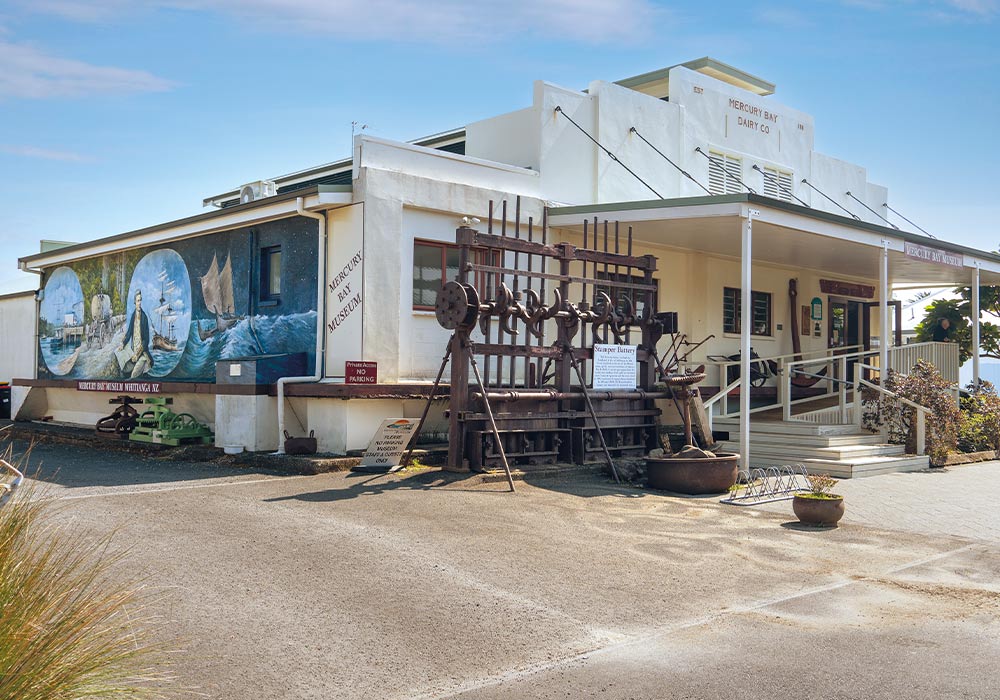
Entering the Mercury Bay Museum, located in a former dairy company factory on the Whitianga Harbourside, you’re greeted by a statue containing three Māori figures that are cast in a style that recalls the works of Donatello and Michelangelo.
There’s no notice identifying these luminaries, so here’s my personal interpretation: the tall one is Tama-te-kapua, the captain of the Te Arawa canoe; the woman to the left is his lover, Whaka-o-te-rangi, the wife of the Tainui canoe captain, Hoturoa; while the third man sitting to the right is Hei, the famed navigator of the Te Arawa. It’s the latter who most left his mark on Mercury Bay. Hahei means ‘place of Hei’ and Ngati Hei are the tangata whenua of the region.
Whaka-o-te-rangi would go on to establish the cultivation of kumara in New Zealand after arriving here aboard the Te Arawa. If she had been kidnapped by the Te Arawa captain as claimed by some, it was obviously done in a way that ensured that she had time to carefully put a bunch of young kumara plants into her kete (kit bag), along with enough soil to nurture them over the long voyage. Could it be that she was rather enamoured with Tama-te-kapua at the time, and willingly went with him on that long and dangerous journey to Aotearoa? Was the voyage of the Tainui driven by Hoturoa’s desire to catch up with his wife and settle the score with Tama-te-kapua? The two men fought when the canoes caught up in the Waitemata harbour, and Whaka-o-te-rangi left the scene aboard the Tainui after the fight.
After starting settlements mostly on the east coast of the North Island, many who arrived on the Te Arawa would eventually put down roots in the Coromandel. Tama-te-kapua is buried at the top of Moehau, peninsula’s highest peak. At 2.7 metres in height, he would have made even a professional Polynesian NBL basketball player like Steven Adams look small and was the survivor of the bloody semi-mythical battle of Te Karihipotae, a legendary conflict in which every other participant perished.
The arrival of Cook
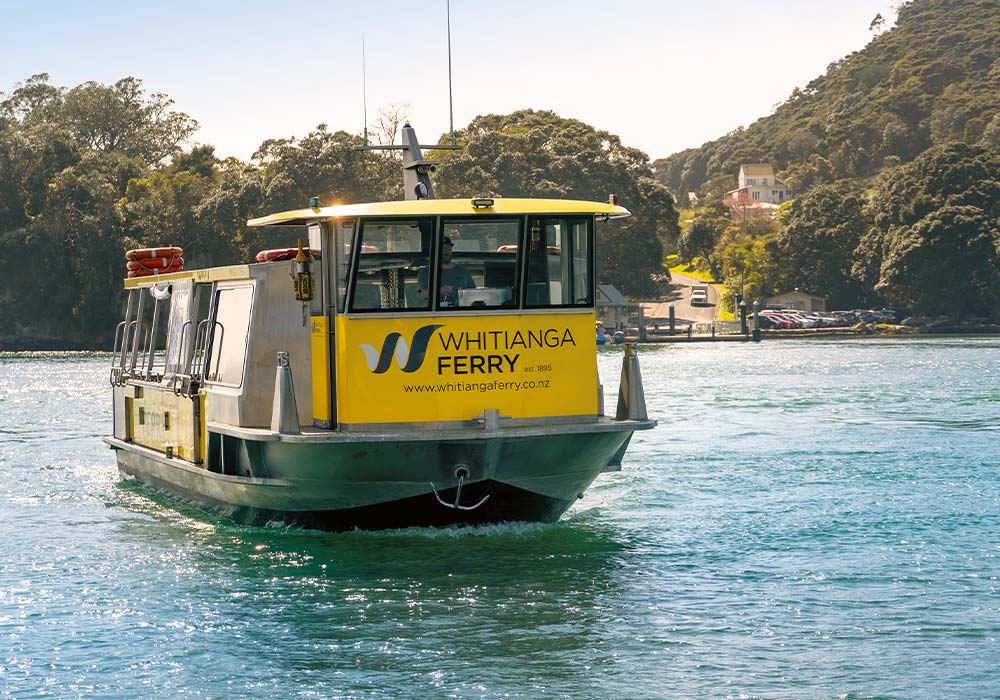
Another museum exhibit of an 18th Century telescope and sextant tells a more peaceful tale: the arrival of the HMS Endeavour in Mercury Bay in November 1769, and the first friendly interaction between Māori and Europeans. Helping foster the goodwill between the two races was the presence of the high-born Tahitian, Tupaia, among Cook’s companions.
Cook used instruments similar to those on display to observe the transit of Mercury on 9 November 1769, and the Endeavour was hauled ashore at the beach that bears his name just to the east of Whitianga for repairs. Six days later, Cook unfurled the Union Jack on the beach and claimed British Sovereignty for New Zealand in the name of King George III, an act as significant in the birth of our nation as the signing of the treaty that legitimised it 71 years later.
A good way to visit the scene of these history-making events is to catch the ferry across the mouth of Whitianga harbour, and either walk or cycle the short distance past Flaxmill Bay to Cooks Beach. It’s a more relaxing method than the drive around the harbour and the ferry operates almost constantly during daylight hours.
The other great walk/cycle route is to use leg muscles to travel around the Mercury Bay foreshore from Whitianga to Simpsons Beach and back again. You get to see the bay from a lot of different angles as your point of view slowly changes and gain a full appreciation of the natural beauty of the area and the incredible forces that formed it.
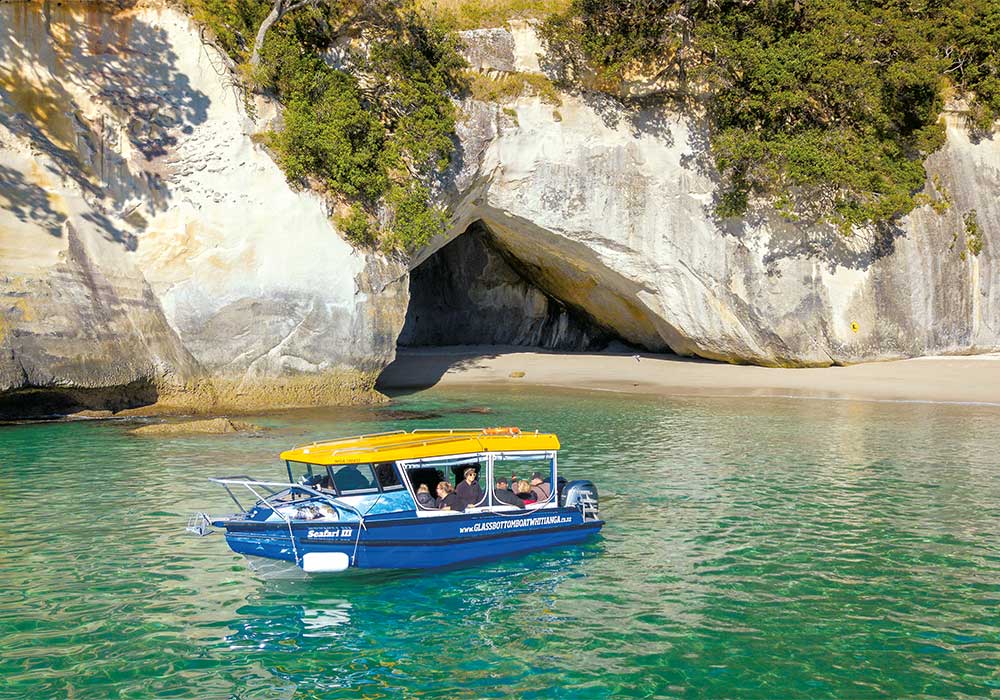
Five places to park/camp near Whitianga
- NZMCA park
Still open at the time of writing, this NZMCA park is about to move. Enjoy the good drainage, potable water, rubbish collection, and peaceful canal-side walk to town while you can. - Mercury Bay Holiday Park
Need somewhere closer to the town and harbour than the NZMCA park? This is the place and it offers Camp Saver discounts to NZMCA members. - Kuaotunu Campground
This historic former gold rush town is 19km north of Whitianga and has a café, general store, and a great restaurant. Riverside camp is affordable, clean, and generally quiet out of season. - Cooks Beach Resort
CampSaver discounts apply at this facility located between the beach and the elevated views available at the Mercury Bay Estate Winery and Restaurant. - Mill Creek Bird Park and Campground
Located 3.5km up Mill Creek Road, south of Whitianga, this campground is attached to an aviary of exotic birdlife. NZMCA member discounts apply.
Five must-dos in Whitianga
- Walk from the town centre to Simpsons Beach and back – it’s an easy stroll along the foreshore with excellent views.
- Catch the ferry across the harbour mouth and investigate Flaxmill Bay, Shakespeare Cliff, and Cooks Beach on foot or bike.
- Visit the Mercury Bay Museum on the harbourside and come face to face with a Giant Moa.
- Eat a wood-fired pizza at Luke’s Kitchen in nearby Kuaotunu – it’s arguably the best you’ll ever eat anywhere.
- Visit Cathedral Cove by whatever means you can – boat tour, personal paddleboard/kayak, or hired water taxi – it’ll be worth it.

